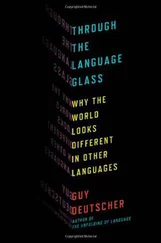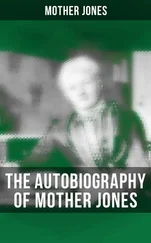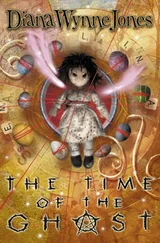Heraldic symbols were invented because only when the past is preserved does it make sense. For much of history wealth was dissipated on funerary ornaments to remind the unborn from whence they sprang. University College London contains an eccentric object; the stuffed body of the philosopher Jeremy Bentham (who was associated with the College at its foundation). Bentham hoped to start a fashion for such 'auto-icons' in the hope of reducing the cost of monuments to the deceased. It did not catch on, although the popularity of his corpse with visitors suggests that it ought to have done. Such pride in family would now be greeted, mainly, with derision. Harold Wilson, the British Prime Minister of the 1960s, did as much when he mocked his predecessor, Lord Home, for being the Seventeenth Earl of that name. Lord Home deflected the jest when he pointed out that his critic must be the seventeenth Mr Wilson. He made a valid claim: that while only a few preserve their heritage in an ostentatious way, every family, aristocratic or not, retains the record of their ancestors. Everyone, however deficient in history, can decipher their past in the narrative of the DNA.'
Some can use inherited abnormalities. A form of juvenile blindness called hereditary glaucoma is found in France. Parish records show that most cases descend from a couple who lived in the village of Wicrr-Effroy near Calais in the fifteenth century. Even today pilgrims pray in the village church of Sainte Godeleinc, which contains a cistern whose waters are believed to cure blindness. Thirty thousand descendants have been traced and for many the diagnosis of the disease was their first clue about where their ancestors came from and who their relatives might be. The gene went with French emigrants to the New World.
Human genetics was, until recently, restricted to studying pedigrees that stood out because they contained an inborn disease. Its ability to trace descent was limited to those few kindreds who appear to deviate from some perfect form. Biology has now shown that perfection is a mirage and that, instead, variation rules. Thousands of characters — normal diversity, not diseases — distinguish each nation, each family and each person. Everyone alive today is different from everyone who ever has lived or ever will live. Such variation can be used to look at shared ancestry in any lineage, healthy or ill, aristocratic or plebeian. Every modern gene brings clues from parents and l',r: inilp.imiis, from the earliest humans a hundred thousand years and more ago and from the origin of life four thousand million years before that.
Most of genetics is no more than a search for diversity. Some differences can be seen with the naked eye. Others need the most sophisticated methods of molecular biology. As a sample of how different each individual is we can glance beneath the way we look to ask about variation in how we sense the world and how the world perceives us.
Obviously, people do not much resemble each other. The inheritance of appearance is not simple. Eye colour depends first on whether any pigment is present. If none is made the eye is pale blue. Other lints vary in the amounts of the pigment made by several distinct genes, so that colour is not a dependable way of working out who fathered a particular child. The inheritance of hair type is also rather complex. Apart from very blonde or very red hair, the genetics of the rest of the range is confused and is further complicated by the effects of age and exposure to the sun.
Even a trivial test shows that individuals differ in other ways. Stick your tongue out. Can you roll it into a tube? About half those of European descent can and half cannot. Clasp your hands together. Which thumb is on top? Again, about half the population folds the left thumb above the right and about half do it the other way. These attributes run in families but their inheritance, like that of physical appearance, is uncertain.
People vary not just in the way the world sees them, but how they see it. A few are colour-blind. They lack a receptor for red, green or blue light. All three are needed to perceive the full range of colour. The absence of (or damage to) one (usually that for green, less often for red, almost never for blue) gives rise to a mild disability that may have made a difference when gathering food in ancient times. The three genes involved have now been tracked down. Those for red and green are similar and diverged not long ago, while the blue receptor has an identity of its own. John Dalton, best known for his atomic theory, was himself so colour-blind as to match red sealing-wax with a leaf (which must have made things difficult for a chemist). He believed that his own eyes were tinted with a blue filter and asked that they be examined after his death. They were, and no filter was found, but, a century and a half later, a check of the DNA in his pickled eyeballs showed him to have lacked the green-sensitive pigment.
Colour-blindness marks the extreme of a system of normal variation in perception. When asked to mix red and green light until they march a standard orange colour, people divide into two groups that differ in the hue of the red light chosen. There arc two distinct receptors for red, differing in a single change in the DNA. About sixty per cent of Europeans have one form, forty per cent the other. Both groups are normal (in the sense that they are aware of no handicap) but one sees the world through rather more rose-tinted spectacles than the other. The contrast is small but noticeable. If two men with different red receptors were to choose jacket and trousers for Father Christmas there would be a perceptible clash between upper and lower halves.
In the 1930s, a manufacturer of ice trays was surprised to receive complaints that his trays made ice taste bitter. This baffled the entrepreneur as the ice tasted just like ice to him, but was a hint of inherited differences in the ability to taste. To some, a trace of a substance used in the manufacturing process is intolerable, while to others a concentration a thousand times greater has no taste at all. Much of the difference depends on just one gene which exists in two forms. That observation, the ability or otherwise to perceivea substance, now called PROP, was the key to a new universe <>l taste. Genetic 'supertasters' are very sensitive to the hops in beer, to pungent vegetables like broccoli, to sugar and to spices, while non-tasters scarcely notice them. Half the population of India cannot taste the chemical at all, but just one African in thirty is unable to perceive it. Students of my day thought it witty to make tea containing PROP to see the bafflement of those who could drink it and those who could not. Today's undergraduates have more sense.
As truffle-hunters know, scent and taste are related. There is genetic variation in the ability to snu-ll, among other things, sweat, musk, hydrogen cy.imdi- and (hi' odour of frcesias. Many animals comniiiiiu.iU' vvnh c.kIi oiIkt through the nose. Female mice can smell noi only who a male is, but how close a relative he might be. Humans also have an odorous identity, as police clogs find it more difficult to separate the trails of identical twins (who have all their genes in common) than those of unrelated people. Man has more scent glands than does any other primate, perhaps as a remnant of some uniqueness in smell which has lost its importance in a world full of sight. The tie between sex and scent in ourselves is made by a rare inborn disease that both prevents the growth of the sex organs and abolishes the sense of smell, suggesting that the two systems share a common pathway of development in the early embryo.
Variation in the way we look, see, smell and taste is but a tiny part of the universe of difference. The genes that enable mice to recognise each other by scent are part of a larger system of identifying outsiders. The threat of infection means that every creature is always in conflict with the external world. The immune system determines what should be kept out. It differentiates 'self from 'not-self' and makes protective antibodies that interact with antigens (chemical clues on a native or foreign molecule) to define whether any substance is acceptable. The millions of antibodies each recognises a single antigen. Cells bear antigens of their own that, with great precision, separate each individual from his fellows. Antigens are a hint of the mass of uniqueness beneath the bland surface of the human race.
Читать дальше
Конец ознакомительного отрывка
Купить книгу












